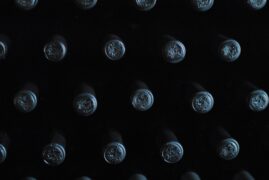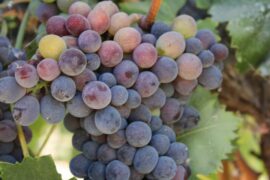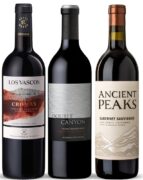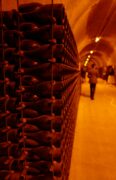In recent years, the wine industry has begun to embrace the power of artificial intelligence (AI) to improve both vineyard management and winemaking. One of the most exciting applications is AI-driven predictive analytics, which holds the potential to revolutionize the way vineyards optimize grape yield. By analyzing large volumes of data, AI can help winemakers make more informed decisions, increase productivity, and enhance the overall quality of their wines.
The Role of AI in Vineyard Management
Managing a vineyard is a complex process that requires constant monitoring of environmental factors, grapevine health, soil conditions, and weather patterns. Traditional methods rely on manual observation and experience, which, while effective, often lack the precision and scalability that modern technologies offer. Enter AI and predictive analytics.
Using machine learning algorithms, AI systems can analyze vast datasets from various sources, such as weather stations, soil sensors, satellite imagery, and historical vineyard data. This information can then be processed to predict grape growth patterns, identify potential issues like pests or diseases, and determine the best times for irrigation, fertilization, and harvesting.
How AI-Driven Predictive Analytics Works
Predictive analytics powered by AI works by examining patterns and correlations in historical and real-time data to forecast future events. In vineyards, this technology can help winemakers:
- Predict Optimal Harvest Times – AI can analyze weather patterns, grape maturity data, and environmental conditions to accurately predict the best time to harvest grapes, ensuring optimal ripeness and flavor.
- Optimize Irrigation and Fertilization – By monitoring soil moisture levels and weather forecasts, AI can recommend precise irrigation schedules, preventing overwatering or drought stress, both of which impact grape quality. It can also optimize fertilization, ensuring that nutrients are delivered efficiently and at the right times.
- Disease and Pest Detection – Early detection of diseases and pests is crucial in vineyard management. AI can analyze images from drones or sensors to identify early signs of problems, enabling timely intervention and reducing the use of chemical treatments.
Benefits of AI in Optimizing Grape Yield
AI’s role in vineyard management leads to several key benefits that directly impact grape yield and overall wine quality:
- Increased Efficiency and Precision
AI-driven predictive models allow for data-driven decision-making. This means winemakers can manage resources more effectively, leading to better use of water, fertilizers, and pesticides, ultimately improving grape yield and quality. For instance, precise irrigation can reduce water waste while ensuring the grapes receive exactly what they need to thrive. - Reduced Environmental Impact
Sustainable viticulture is an increasingly important goal for modern winemakers. By optimizing resource usage, AI helps reduce the vineyard’s environmental footprint. Better pest and disease control also minimize the reliance on chemical treatments, leading to healthier ecosystems around the vineyard. - Improved Grape Quality
Timing is everything in winemaking, and AI helps predict the best time to harvest grapes based on factors like sugar content, acidity levels, and weather conditions. By harvesting at the optimal moment, winemakers can ensure they produce higher-quality wine with more consistent flavor profiles. - Cost Savings
AI allows for more efficient resource allocation, which translates to cost savings for vineyard operators. Reduced water and fertilizer use, as well as targeted pest control, lower operating costs. Additionally, early problem detection reduces the risk of crop loss, saving money in the long term.
Case Studies: AI in Action
Several vineyards have already embraced AI-driven predictive analytics to improve their grape yields. For example, Château Mouton Rothschild in Bordeaux has used AI technology to monitor vineyard conditions and predict the optimal harvest time, resulting in improved wine quality year after year.
In California’s Napa Valley, vineyards are leveraging drones equipped with AI-powered sensors to collect real-time data on grape health and soil conditions. The AI algorithms then analyze this data to optimize watering schedules and detect disease outbreaks early, allowing winemakers to take quick action.
Challenges and Future of AI in Winemaking
While AI-driven predictive analytics offers numerous benefits, there are challenges that need to be addressed. The high initial costs of implementing AI technology can be a barrier for smaller vineyards, and there is also the need for skilled personnel to interpret the data and implement AI-driven insights effectively.
However, as AI technology becomes more accessible and affordable, its adoption in winemaking is expected to grow rapidly. The future will likely see AI integrated across all stages of the winemaking process, from vineyard management to fermentation and distribution, enhancing efficiency and sustainability in the industry.
Conclusion
AI-driven predictive analytics is transforming vineyard management, allowing winemakers to optimize grape yield and improve wine quality. With the ability to predict harvest times, optimize irrigation, detect pests and diseases early, and reduce environmental impact, AI offers a powerful tool for the modern winemaker. As technology advances, its role in the wine industry is poised to expand, bringing data-driven precision to an age-old craft.
By embracing AI, winemakers can not only improve their productivity but also meet the growing demand for high-quality, sustainably produced wines, ensuring their success in an increasingly competitive market.





















































